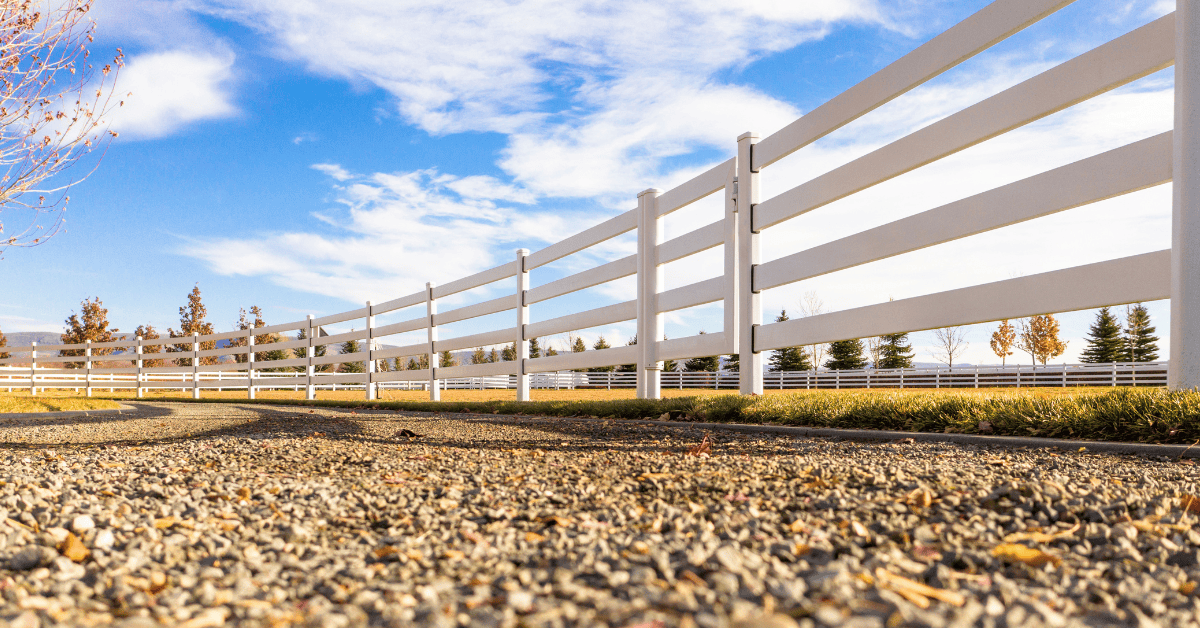Fencing isn’t just about keeping animals contained—it’s about protecting your investment. And like every piece of infrastructure on a ranch, fencing comes with a lifespan that eventually shows up on both the land and the books.
That lifespan is what folks call depreciation life. In simple terms, it’s how long your fencing is expected to last before it needs to be replaced, repaired, or written off as a business expense. The longer your fence holds up, the less it costs you over time. And that’s not just in dollars, but in headaches, downtime, and lost productivity.
When you start looking at fencing decisions through the lens of depreciation, you’ll see pretty quickly that not all materials are created equal. Some last long enough to outlive your operation. Others barely see a decade before they’re rotting, leaning, or dangerous to livestock.
What Is Fence Depreciation Life?
The IRS looks at fencing as a capital investment, which means it can’t be written off in a single year like feed or fuel. Instead, fencing gets depreciated over a set number of years, and that’s currently seven years for agricultural fencing.
However, the tax code doesn’t know a thing about the real world. Wood fencing that barely makes it ten years and galvanized steel fencing that lasts fifty both get put in the same seven-year depreciation bucket on paper.
For the operator, the difference is enormous. You might get the same tax write-off, but the fence that fails in year eight leaves you pulling out posts and spending again, while the fence built to last keeps doing its job without another dime spent.
The True Cost of Short-Lived Fencing
It’s easy to look at the upfront cost and think you’re saving money with cheaper materials. That’s a rookie mistake.
Wood board fencing might look traditional, but it starts deteriorating the moment it’s installed. Sun, rain, insects, and livestock abuse all shorten its real-world lifespan. By the time you replace boards, treat posts, repaint rails, and eventually rebuild entire sections, you’ve spent two to three times more than you thought you saved at the beginning.
Vinyl fencing doesn’t fare much better. It looks clean at first, but temperature swings and UV breakdown make it brittle, and once it cracks, repairs become an endless cycle.
When you factor in labor costs (your own time or the crews you hire) short-lived fencing becomes one of the most expensive mistakes you can make.
Why Longevity Changes the Equation
Longevity is the single biggest factor that shifts the depreciation math in your favor. A fence that lasts 30–50 years spreads its cost across decades, not just a handful of seasons. That means:
- Lower annual costs: The upfront investment gets divided across a much longer timeline.
- Fewer replacements: You’re not ripping out posts and hauling in new materials every decade.
- Reduced downtime: Your animals stay secure without constant patch jobs.
- Preserved appearance: A fence that still looks sharp after 20 years adds value to your property instead of making it look neglected.
That’s why many ranchers and horse owners choose steel board fencing. Built from galvanized steel with powder coating, it’s engineered for longevity in real-world conditions. Posts stay solid. Rails don’t rot, splinter, or shatter. And when the system eventually reaches its end of life, the materials can be recycled instead of wasted.
Matching Fence Depreciation Life to Your Operation
Choosing the right fence isn’t just about materials, though. It’s about aligning the depreciation life with your long-term plans.
- Short-term lease or temporary operation? Lower-cost, shorter-lived fencing might make sense if you don’t plan to stay on the land.
- Multi-generation ranch or horse property? Invest in materials with 30+ year lifespans. You’ll save money, time, and labor while creating infrastructure that supports future operators.
- Tax planning? Remember that the IRS depreciation schedule doesn’t reflect real-world durability. Smart operators look past the paper numbers and choose materials that reduce long-term out-of-pocket costs.
Building Fences That Outlast Your Ledger
Depreciation life is a practical reality that shows up in your pastures, corrals, and bank account.
Cheap fencing might pencil out on day one, but it rarely stands the test of time. Long-lived systems like steel board fencing change the math. They give you infrastructure that holds strong through decades of weather, livestock pressure, and market cycles.
At Buckley Fence, we’ve built fencing designed to last for generations, not just tax cycles. The numbers on paper are one thing, but the real savings come when your fence is still standing strong long after others have failed.
Because in the end, depreciation life isn’t about what the IRS says…it’s about whether your fence is still there doing its job when your kids and grandkids are running the same ground.
Want to see what real, high-quality fencing looks like? Check out our steel board fencing options and see the difference.



